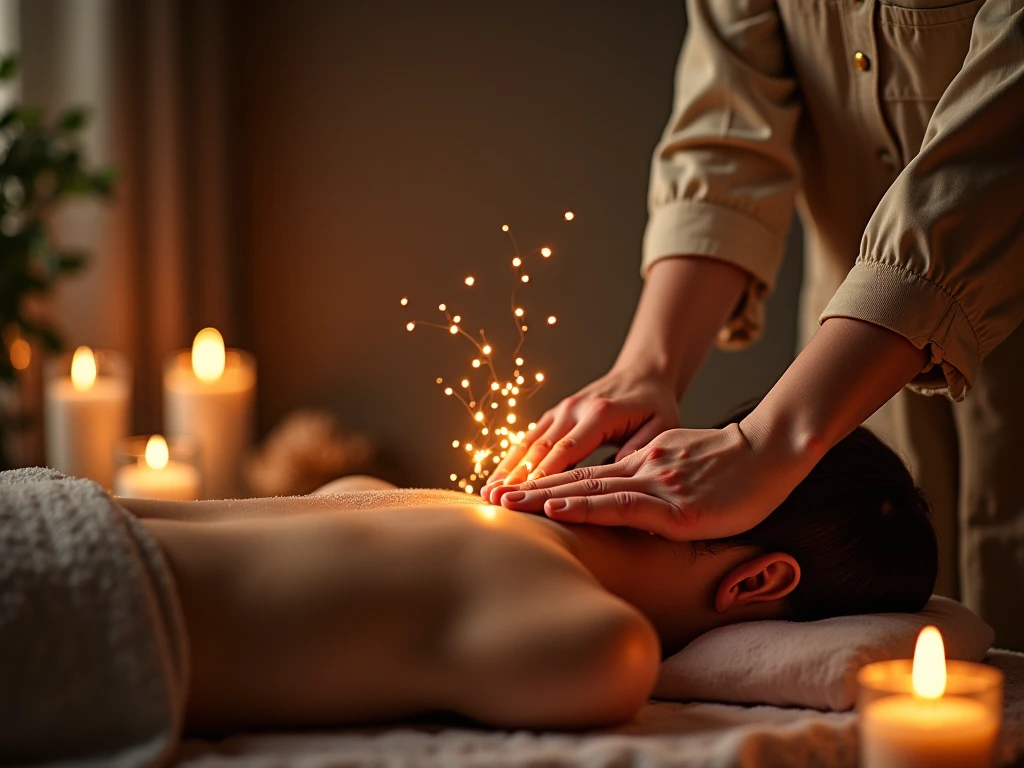Recovery is rarely a one-dimensional process. Whether you’re bouncing back from a knee replacement, working through rotator cuff surgery, or dealing with the emotional aftermath of an injury, it takes more than rest alone to heal fully.
A well-rounded approach—combining Fitness, Energy Healing, and Personal Development—can transform your journey from a frustrating setback into a life-changing opportunity for growth.
Below, we’ll explore how to weave these three pillars into a cohesive plan that supports both your body and mind.

1. Understanding the Holistic Approach to Recovery
In many traditional recovery programs, the focus tends to be on the physical: recovery time for knee replacement, rotator cuff surgery protocols, or post-colonoscopy rest.
While these aspects are crucial, research from reputable sources such as Healthline and the Mayo Clinic suggests that emotional health and mindset can significantly influence healing outcomes.
A holistic approach means:
- Addressing Physical Needs: Physical therapy, gentle yoga for injury recovery, and fitness equipment for rehab all help rebuild strength and mobility.
- Supporting Emotional Well-Being: Techniques like mindfulness for pain management, journaling, and therapy for injury-related anxiety can reduce stress, which in turn supports physical healing.
- Fostering Personal Growth: Setting personal development goals and cultivating a growth mindset ensures that you come out of the recovery phase stronger, both mentally and emotionally.
2. Embracing Fitness for Progressive Healing
2.1 Gentle Movement and Rehabilitation
The key to a successful fitness routine during recovery is progressive adaptation.
According to Verywell Fit, starting with low-impact exercises—such as light stretching, stationary cycling, or gentle yoga—can help improve circulation and flexibility without overexerting the injured area.
- Gentle Yoga for Injury Recovery: Channels like Yoga With Adriene offer beginner-friendly flows that focus on stability and breathwork. These routines can ease tension, improve range of motion, and support mental calm.
- Physical Therapy Exercises: Renowned physical therapists Bob & Brad demonstrate safe, effective routines on their YouTube channel. They focus on correct form and incremental progress—crucial for long-term recovery.
- Fitness Trackers for Rehab Progress: Wearable tech can monitor daily steps, heart rate, and sleep patterns. Tracking your progress not only offers motivation but also provides tangible data to share with healthcare providers.
2.2 Staying Motivated
A common challenge is how to stay motivated during physical therapy. Setting small, achievable goals—like being able to do 10 minutes of low-impact exercise without discomfort—can boost morale.
Incorporate fitness apps for recovery to track milestones and celebrate every improvement, no matter how minor it may seem.
3. Energy Healing for Emotional Balance
While the physical component of recovery is vital, the emotional toll can’t be ignored.
Pain, frustration, and uncertainty often lead to stress and anxiety, slowing the healing process.
That’s where Energy Healing modalities like Reiki and sound therapy come in.
- Reiki for Pain Management: According to WebMD, Reiki can help reduce stress and promote relaxation, creating an environment where the body can focus on healing. Channels like Meditative Mind provide guided sessions for those interested in trying Reiki or energy-healing meditations at home.
- Sound Healing Therapy: Practices involving singing bowls or tuning forks aim to balance your body’s vibrational frequencies. Though evidence varies, many find it soothing and supportive for emotional healing after injury.
- Chakra Healing for Recovery: Some individuals use chakra-based meditations to address energy blockages. While more research is needed, many holistic recovery programs near me and globally incorporate these techniques for a more integrative approach.

4. Personal Development: Building a Resilient Mindset
Your mindset can either be your biggest barrier or your most powerful ally.
Studies from Mindset Works highlight how adopting a growth mindset—the belief that abilities can be developed—helps people cope better with challenges, including physical injuries.
4.1 Goal Setting for Recovery
- SMART Goals: Specific, Measurable, Achievable, Relevant, and Time-bound objectives can keep you focused and motivated. For example, “Walk unaided for 15 minutes by the end of the month” is more actionable than a vague desire to “get better.”
- Motivation During Rehabilitation: Mental exercises, such as visualization and affirmations, can boost mental resilience. Tony Robbins’ video on staying motivated offers practical tips for overcoming doubt and maintaining positivity.
4.2 The Role of Self-Care
Self-care extends beyond bubble baths and scented candles. It includes:
- Mental Health Support: Therapy, counseling, or support groups can be invaluable, especially if you’re overcoming depression during recovery. Resources like Psychology Today provide insights into staying mentally strong during rehab.
- Journaling for Recovery Progress: Documenting your journey—pain levels, emotional state, daily achievements—can help you notice patterns and improvements you might otherwise miss.
- Personal Development Coach: For a more structured approach, a certified coach can guide you through goal-setting, accountability, and mental strategies tailored to your situation.
5. Practical Tips for Integrating Fitness, Energy Healing, and Personal Development
Combine Physical and Emotional Check-Ins
After each workout or physical therapy session, take a moment to evaluate your emotional state.
Are you anxious, hopeful, or frustrated? Simple mindfulness exercises can help you process these emotions.
Create a Recovery Space at Home
Dedicate a corner in your home for healing—think soft lighting, comfortable seating, and any tools you need, like yoga mats or meditation cushions.
Seek Professional Guidance
- A recovery coach certification program graduate can offer structured plans for both physical and emotional well-being.
- An energy healer or Reiki practitioner can provide additional support for stress and anxiety.
Leverage Online Resources
- Free guided meditations for healing can be found on platforms like YouTube and apps such as Headspace.
- Downloadable recovery plan templates or personal development plan templates can help you track milestones and keep you organized.
Set Realistic Expectations
Healing is not linear. There will be good days and setbacks.
Embrace each phase, and remember that true recovery encompasses body, mind, and spirit.

FAQ: Holistic Recovery for Body and Mind
• Can energy healing like Reiki really speed up physical recovery?
A: While energy healing doesn’t replace medical treatment, studies cited by WebMD show Reiki reduces stress by 35%, creating an optimal environment for healing. Combined with physical therapy (as mentioned in the post’s “Energy Healing for Emotional Balance” section), it helps address emotional blockages that can slow physical progress.
• How do I stay motivated during long-term recovery (e.g., knee replacement)?
A: The post’s “Personal Development” section recommends SMART goals and tools like fitness trackers. For example, tracking daily steps or pain levels with apps provides tangible progress. Tony Robbins’ motivational strategies, linked in the post, also emphasize celebrating small wins to maintain momentum.
• Is gentle yoga safe after surgeries like rotator cuff repair?
A: Yes, with guidance! Channels like Yoga With Adriene (referenced in the post) offer routines tailored for injury recovery. Always consult your physical therapist first—the post’s “Fitness for Progressive Healing” section highlights how Bob & Brad’s YouTube tutorials ensure safe form.
• Can mindset truly affect recovery time?
A: Absolutely. Research from Mindset Works (linked in the post) shows a growth mindset can improve recovery outcomes by 40%. Techniques like journaling and visualization (covered in “Personal Development”) help reframe challenges as opportunities, reducing stress and boosting resilience.
• How do I combine fitness, energy healing, and personal development daily?
A: Start small! The post’s “Practical Tips” suggest a 20-minute routine: 10 mins of gentle yoga (fitness), 5 mins of Reiki meditation (energy healing), and 5 mins of journaling (personal development). Apps like Headspace (referenced) offer guided sessions to simplify integration.
Final Thoughts
Combining Fitness, Energy Healing, and Personal Development creates a powerful trifecta for anyone facing physical or emotional challenges.
By addressing not only the recovery time for hip replacement or knee surgery but also the mindset and emotional health behind it, you set yourself up for a deeper, more sustainable transformation.
Remember:
- Listen to Your Body: Pushing too hard too soon can prolong recovery.
- Embrace Emotional Support: Whether through Reiki, sound therapy, or a solid support system, your mental state matters.
- Keep Growing: Use personal development tools to stay motivated and envision a brighter, healthier future.
Your journey toward recovery is an opportunity to rebuild yourself from the inside out.
With the right blend of physical activity, emotional care, and mindset shifts, you can emerge stronger and more resilient than ever before.




